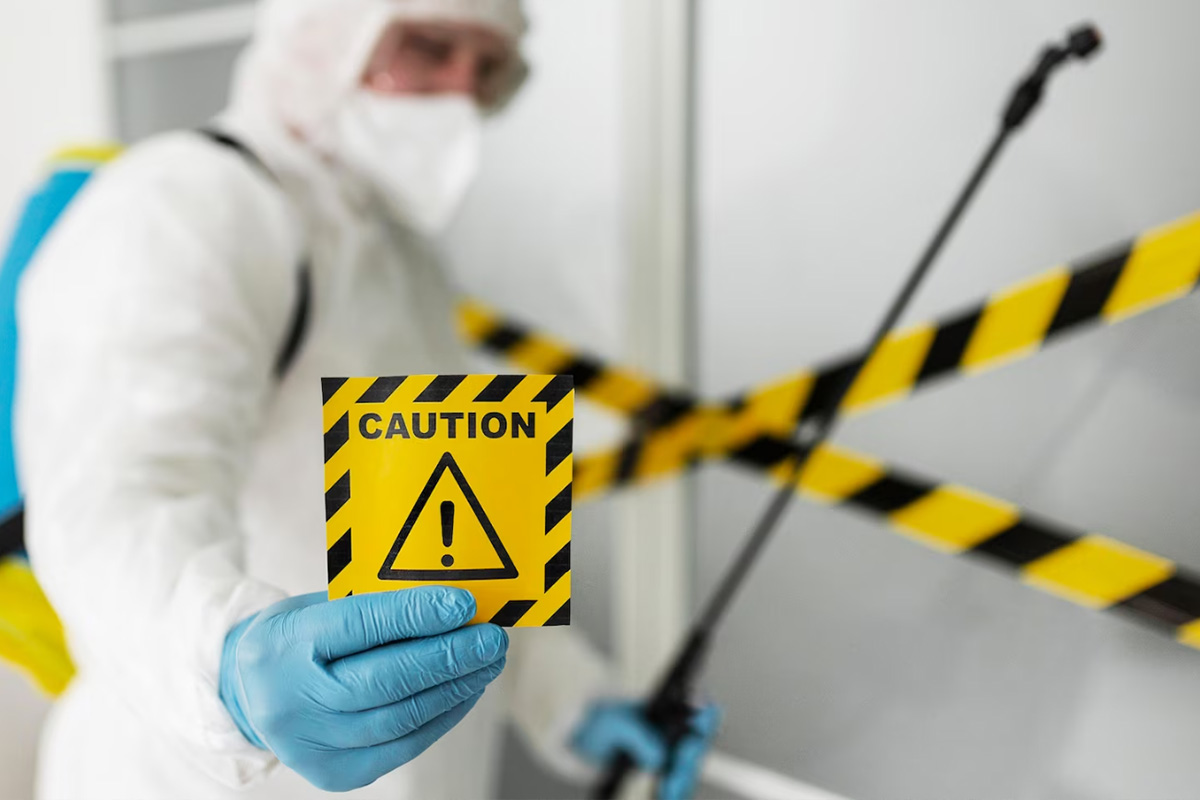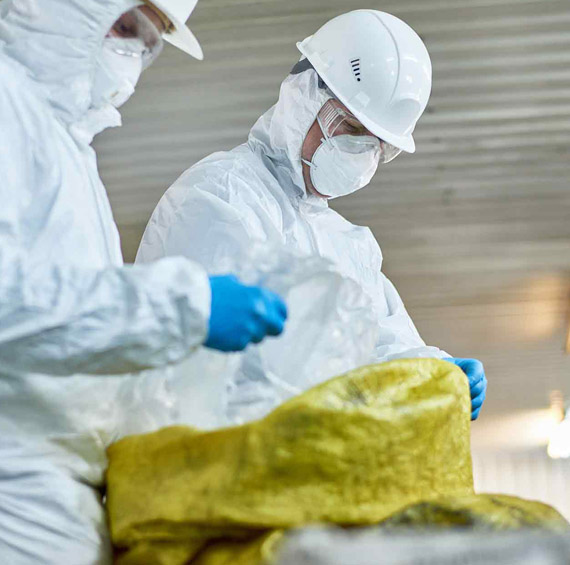Specialist Blood Cleanup: Ensuring Safe and Thorough Decontamination
Specialist Blood Cleanup: Ensuring Safe and Thorough Decontamination
Blog Article
Expert Biohazard Cleaning and Decontamination for Blood, Bodily Fluids, and Hazardous Materials
The potential health threats associated with exposure to biohazards highlight the crucial demand for meticulous handling and extensive cleanup. As we browse the elaborate landscape of biohazard cleaning, recognizing the nuances of policies, conformity, and the specialized equipment at play comes to be critical in ensuring a detailed and safe decontamination process.
Wellness Risks of Biohazard Exposure
Exposure to biohazards poses substantial wellness dangers that can result in serious effects for areas and people alike. Biohazards incorporate a wide variety of biological materials, consisting of blood, physical liquids, mold and mildew, bacteria, infections, and other potentially infectious materials. When individuals come into call with these biohazards, whether via crashes, inappropriate handling, or ecological direct exposure, they encounter the threat of contracting major health problems or conditions.
Among the main wellness threats related to biohazard direct exposure is the transmission of infectious diseases. Bloodborne pathogens such as HIV, hepatitis B and C, and various bacteria can be existing in biohazardous products, presenting a straight danger to human wellness. Breathing in airborne biohazards like mold spores or entering contact with polluted surfaces can likewise result in breathing issues, allergic reactions, and various other adverse wellness results.
Moreover, biohazard exposure can have long-term health implications, with some illness materializing years after the preliminary contact (Blood Cleanup). Therefore, it is crucial to focus on appropriate biohazard cleansing and decontamination to minimize these health and wellness risks and ensure the safety and security of individuals and communities

Specialized Training for Biohazard Clean-up
When it involves dealing with biohazard cleaning efficiently and securely, specialized training plays an essential role in making sure appropriate decontamination treatments are adhered to. Biohazard cleanup needs certain expertise and skills to effectively mitigate risks related to bloodborne virus, physical fluids, and dangerous products. Professionals educated in biohazard clean-up undertake strenuous instruction on how to safely manage, get rid of, and get rid of biohazardous materials to avoid contamination and exposure.
Specialized training for biohazard clean-up covers a variety of important topics, including appropriate individual safety tools (PPE) use, bloodborne virus recognition, purification strategies, and hazardous waste disposal protocols. People learnt biohazard clean-up are furnished with the needed competence to examine contamination degrees, recognize prospective risks, and execute suitable cleanup procedures in conformity with governing requirements.
Continual training and education are critical in the field of biohazard cleanup to stay upgraded on the most recent purification technologies, safety and security methods, and laws. By buying specialized training, biohazard cleaning experts can properly react to emergency situation cleaning circumstances and protect both public health and wellness and the atmosphere.
Importance of Correct Purification Methods
Making use of appropriate decontamination methods is essential in biohazard cleanup to properly decrease and eliminate hazardous materials health threats. Reliable purification not only ensures the elimination of visible traces of blood, physical fluids, and other biohazards yet likewise targets unnoticeable virus that may posture major wellness risks otherwise effectively gotten rid of. By following rigid decontamination procedures, educated professionals can significantly decrease informative post the risk of direct exposure to dangerous bacteria, infections, and bacteria that might lead to infections or illness.
Appropriate decontamination methods entail making use of specific tools and disinfectants that are particularly made to reduce the effects of biohazards properly. Detailed cleaning and disinfection of polluted locations are necessary to avoid the spread of microorganisms and make sure a secure setting for owners. Additionally, the appropriate disposal of biohazardous waste complying with purification treatments is essential in protecting against contamination of other surfaces or individuals.

Devices and Devices for Safe Clean-up
When dealing with blood, physical fluids, or harmful materials, biohazard cleansing professionals count on specialized gear to lessen exposure dangers and extensively decontaminate the afflicted location. Furthermore, biohazard cleaning packages including anti-bacterials, absorbent materials, and biohazard bags are utilized to securely include and get rid of of infected items.
Advanced cleaning devices like hospital-grade anti-bacterials, HEPA-filtered vacuums, and fogging makers are used to sanitize surfaces and eliminate biohazards efficiently. check this Specialized devices such as sharps containers and biohazard garbage disposal bins are utilized to safely handle sharp things and biohazardous waste products. By utilizing the right devices and devices, biohazard cleansing specialists can ensure a comprehensive clean-up process that prioritizes security and lessens health and wellness threats for both employees and occupants of the affected space.
Laws and Compliance in Biohazard Cleaning
Appropriate adherence to guidelines and compliance standards is paramount in biohazard cleaning to ensure the safety and security of both employees and the setting. Federal government companies such as OSHA (Occupational Safety And Security and Wellness Administration) and the EPA (Environmental Protection Company) have established certain guidelines for biohazard my link cleaning treatments to lessen health and wellness dangers and ecological contamination. These policies cover a variety of aspects consisting of the handling, transport, and disposal of biohazardous products, along with the essential training and protective tools required for workers associated with the cleanup process.
Biohazard cleansing business should stay current with these laws to ensure that their operations satisfy the required safety and security criteria. Failing to follow these regulations can cause serious consequences, consisting of fines, lawsuit, and threatening the health of people and the atmosphere. By following rigorous guidelines and compliance actions, biohazard cleaning business can efficiently mitigate dangers and make sure a thorough and risk-free clean-up procedure for all events included.
Conclusion
In verdict, biohazard cleaning and purification require specific training, correct methods, and adherence to laws. Direct exposure to blood, physical fluids, and harmful products positions substantial health dangers, making it crucial to utilize the appropriate equipment and tools for risk-free cleaning. By following strict procedures and standards, professionals can successfully minimize the dangers associated with biohazard direct exposure and ensure the security of both themselves and others.
As we browse the detailed landscape of biohazard cleanup, comprehending the subtleties of laws, conformity, and the specialized devices at play comes to be necessary in guaranteeing a risk-free and complete decontamination process. (Blood Cleanup)
When it comes to managing biohazard cleaning successfully and safely, specialized training plays a basic role in guaranteeing appropriate decontamination procedures are complied with.Using appropriate decontamination techniques is vital in biohazard cleanup to efficiently get rid of dangerous materials and minimize wellness dangers. In addition, biohazard cleansing packages consisting of anti-bacterials, absorptive materials, and biohazard bags are used to securely have and get rid of of polluted items.
Federal government firms such as OSHA (Occupational Security and Health And Wellness Administration) and the EPA (Environmental Defense Firm) have established particular guidelines for biohazard cleanup treatments to lessen health and wellness risks and ecological contamination.
Report this page